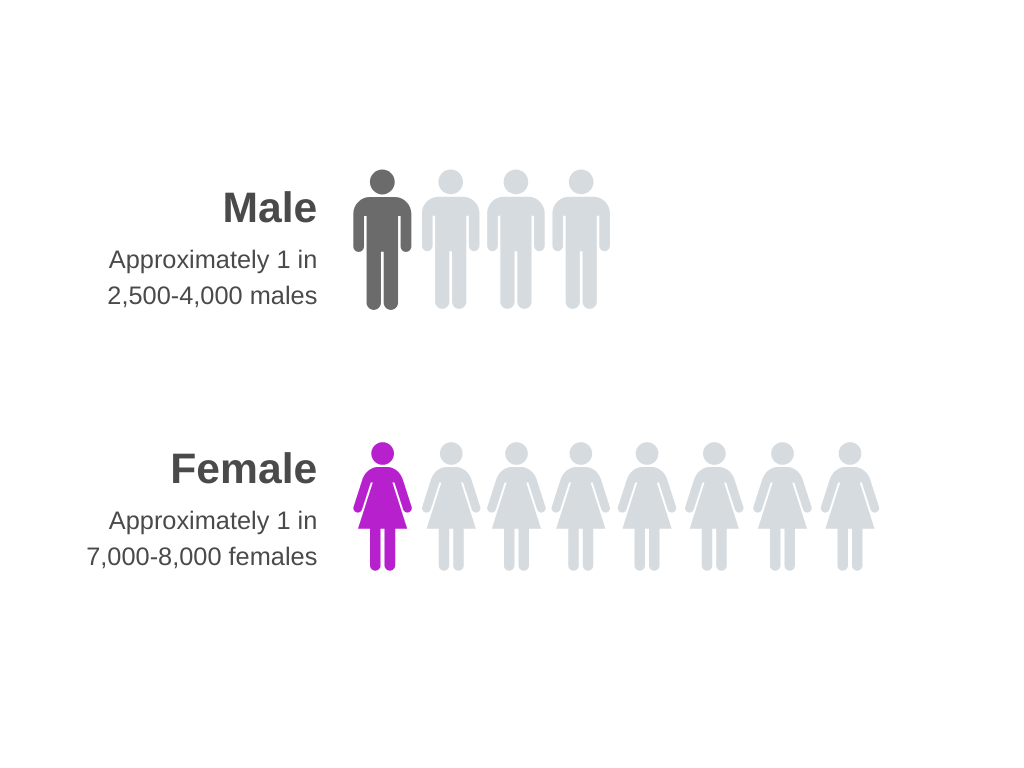
Key facts
- Fragile X syndrome is an inherited condition that causes intellectual disability and a range of physical, behavioural and emotional symptoms.
- Symptoms may include learning difficulties, movement and communication problems, anxiety and autism.
- Females are usually less affected than males.
- There is no cure, but treatments are available to help with symptoms.
- If you are a Fragile X carrier, you usually won’t have any symptoms, but you could pass on the condition to your children.
Fragile X syndrome is an inherited, life-long condition that can cause a range of problems. Early diagnosis and treatment can help those affected to reach their full potential.
What is Fragile X syndrome?
People with Fragile X syndrome (or Fragile X) have intellectual disability, behavioural and learning challenges as well as certain physical characteristics. Fragile X is the most common inherited cause of intellectual disability, and also the most common known genetic cause of autism. It affects around one in 4,000 males and around one in 6,000 females.
Fragile X is caused by a change in a single gene, the FMR-1 gene. This gene helps create a protein that is needed for healthy brain development.
Types of Fragile X syndrome
Depending on how a person’s FMR1 gene has been changed by the Fragile X mutation, they are said to either have the full mutation, or a pre-mutation.
People with the full mutation show symptoms of Fragile X. People with the pre-mutation may not show any symptoms, but are carriers of Fragile X.
Symptoms or signs of Fragile X syndrome
Fragile X can affect people differently. Girls and women are usually less affected than boys and men. A person may be fully affected by Fragile X but not show all of these signs below:
- intellectual disability, slow development and difficulties with communication, coordination, motor skills and learning
- behavioural and emotional features such as aggression, anxiety, shyness and repetitive speech
- physical symptoms such as weak muscles and joints, a heart murmur and a high palate
Fragile X syndrome diagnosis
A diagnosis of Fragile X can be made at any age, by doing a blood test. This test can show whether or not someone is affected by Fragile X or whether they are a genetic carrier.
If you or your partner have Fragile X or are a carrier, and are expecting a baby, you might be able to get a pre-natal test to find out whether your baby will be affected.
Visit Pregnancy, Birth and Baby website for more information about Fragile X and babies.
Carriers of Fragile X
Carriers of Fragile X might develop certain health conditions later in life, such as:
- Fragile X tremor ataxia syndrome, or FXTAS, which causes a tremor and mainly affects men over 50 years
- Fragile X primary ovarian insufficiency, or FXPOI, which can cause infertility and early menopause in women
Living with Fragile X syndrome
Although there is no cure for Fragile X, treatments (including some medications) can help improve quality of life, especially if received early on. Ideally, each person with Fragile X will be cared for by a multidisciplinary team of health professionals.






